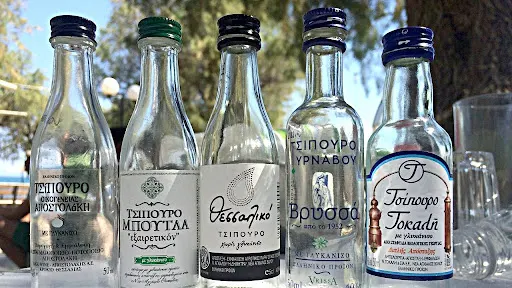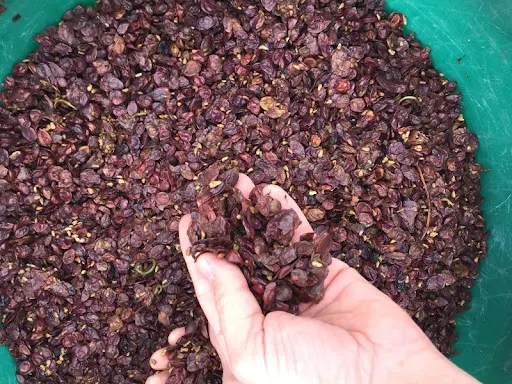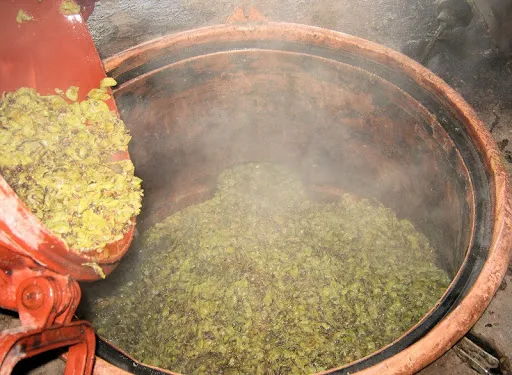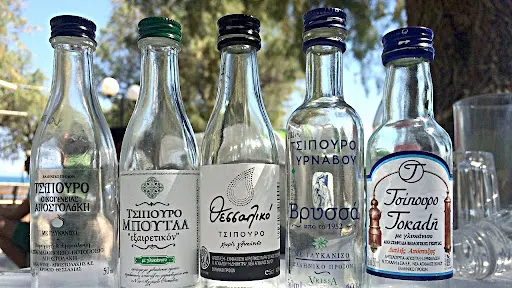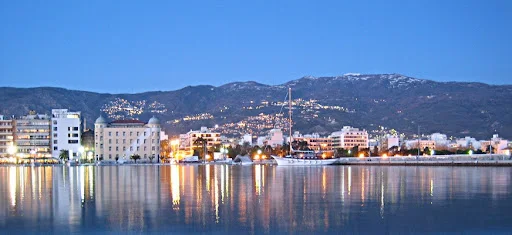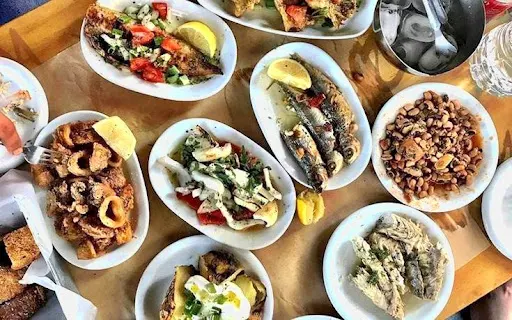Every autumn in Greece, there is the feast for the new wine when pressing of the grapes begins. Then 40 days later it’s time for tsipouro. From late October to the end of December, the liquor is distilled in cooper stills all over Greece.
The tsipouro distilling period marks the first indoor winter celebrations, which take place around the boiling cauldrons. Mushrooms, sausage and steaks are grilled on the fire so that the time spent waiting for the tsipouro will be enjoyable.
Did you say... Tsipouro?
Tsipouro is a liquor distilled from pomace that is left over from winemaking. Similar pomace brandy exists as Zivania in Cyprus, Marc in France, Grappa in Italy, Araq in the Middle East, Loza in Montenegro, Bagaço in Portugal, Komovica in Serbia, Orujo in Spain.
Greek law dictates that tsipouro is «100% grape pomace brandy» with at least 35% alcohol by volume. Ιn Crete, tsipouro is called «tsikoudia» (and in East Crete «raki») and usually is a single distillation product.
According to tradition, the production of tsipouro dates back to the 14th century and began in the monasteries of Mount Athos. Over the years, the production of tsipouro expanded throughout Greece, especially in the areas of Macedonia, Epirus, Thessaly, the Cyclades Islands and the island of Crete.
For many centuries until the beginning of the 20 century, tsipouro was a family-affair produced in the rural areas. Anyone who had a still also had the recipe; those who didn’t have the 2 items would buy tsipouro from the neighbor. Typically each village in Greece has one or two residents who are licensed to distill, and the tsipouro is produced continuously for two or three weeks in late October and early November.
The raw material for the production of the spirit is grape pomace (or tsipoura, and on Crete tsikouda). In other words the residue which is leftover after the pressing of the grapes for wine production. This mass is made up of the grape skins; grape seeds and includes a percentage of unfermented grapes, must in fermentation and or fully fermented mash.
After a 30 to 40 day fermentation period, this mass of grape pomace is placed in stills, where the temperature and the pressure are closely monitored. Most commonly, it undergoes a double distillation process to obtain the final product. The second distillation improves the quality and gives a cleaner product affecting the aroma and flavor.
During the second distillation, in some cases a great variety of flavorings are added: anise, fennel, cloves, nutmeg, mastic, and walnut. Anise causes the white appearance of the drink when mixed with water or ice as is the case with ouzo.
The amount and proportion of added substances is the well-kept secret of every distiller. Tsipouro is usually 36-45 ABV and is served in small glasses. It is most enjoyable when served chilled at 10o C or with some ice. A little water can also be added.
«The still»
Stills used for tsipouro distillation are made of copper since it removes sulfur-based compounds from the alcohol that would make it unpleasant to drink. This is why the first and last distinct batches (called the 'head' -κεφάλι kefali and the 'tail' -ουρά oura) are discarded. Only the intermediate batch (known as the 'heart' -καρδια / kardia) is kept to make tsipouro.
How do you drink it?
Tsipouro can be served neat and is usually accompanied by appetizers. Initially, simple appetizers are served like cheese and olives, cold meats, pickled vegetables, grilled wild mushrooms that gradually become more complex. Spicy dishes are served, alternating continuously, to fill the table with small plates ranging from fresh fish (sardines, picarels, red mullets, anchovies, dusky groupers, bonitos and swordfish) to shellfish and seafood in general. To round off your palate’s party, here come fried shrimps on tomatoe sauce and feta cheese, stuffed squids, octopuses on vinegar, grilled feta cheese, steamed mussels, baked potatoes, and, of course, fresh salads.
Tsipouradika of Volos
The town of Volos, the city of Jason and the Argonauts, is renowned for its tsipouradika, the specialized tavernas serving tsipouro accompanied by mezedes. The meze is served in stages and every time a new batch comes out it is different. The customer do not order a particular meze. It's the job of the waiter and you never interfere. Each time you order a new bottle of tsipouro (served in in its small bottle that barely takes 2 shots) you get a new batch of mezze, which is different to the previous batch.
The variety of the mezze is so great that one can not possibly taste them all in one sitting, and that in itself is incentive enough to come back, and not only for the food, as the atmosphere in these eating places is unique to Greece.
A few words about alcohol in Greece
Greece is a Mediterranean country where drinking is a social event. Alcoholism is not a social phenomenon in Greece and drunkness is not easily accepted in public. It appears that the incidence of alcoholism is relatively low in Greece, in spite of high consumption of alcohol and absence of restrictive measures for its use. This may be related to the traditional integration of alcohol use in the social ritualistic structures and to family and social support of susceptible individuals in the small Greek communities.


